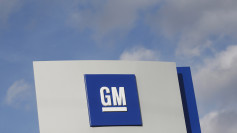United Airlines has disclosed that the Federal Aviation Administration (FAA) is stepping up its oversight of the airline. This move comes in the wake of several alarming incidents, including a section of a jet's outer fuselage detaching, an engine catching fire, and a plane shedding a tire during takeoff. These episodes have raised concerns about the airline's operational safety and compliance with stringent aviation regulations.
Sasha Johnson, United's Vice President of Corporate Safety, has been the voice of the airline during this tumultuous period, indicating that the FAA's intensified scrutiny will encompass "multiple areas of our operation." Johnson's communications to United employees suggest a period of rigorous examination is ahead, with FAA personnel set to delve into the airline's procedures, documentation, and infrastructure.
"Over the next several weeks, we will begin to see more of an FAA presence in our operation," Johnson stated, emphasizing the airline's receptiveness to the FAA's findings and recommendations.
The FAA, for its part, maintains that its enhanced oversight is part of its routine commitment to ensuring airline compliance with established safety norms. An agency spokesperson elaborated on the FAA's role in monitoring airline operations, focusing on regulatory adherence, hazard identification, risk assessment, and safety management.
This perspective was echoed by FAA Administrator Mike Whitaker, who, in remarks to NBC News, highlighted the agency's intent to investigate the recent incidents for potential patterns, signaling a proactive approach to aviation safety.
Amidst growing public scrutiny, United CEO Scott Kirby has sought to reassure passengers and stakeholders of the airline's safety, contending that the recent issues are isolated events rather than symptoms of systemic flaws. Kirby outlined upcoming initiatives aimed at bolstering safety, including additional pilot training and revised instructional materials for new mechanics, showcasing a commitment to continuous improvement in response to the recent challenges.
The incidents prompting this heightened oversight include notably troubling events, such as the loss of an aluminum skin segment from a Boeing 737, an engine fire during a departure from Houston, and a tire mishap during a flight's departure from San Francisco. These incidents, coupled with other concerns like hydraulic leaks and navigation errors on the ground, paint a picture of an airline at a critical juncture in its operational safety journey.
United Airlines, a titan in the aviation sector and the nation's second-largest carrier by revenue, finds itself at a pivotal moment. The FAA's increased oversight represents both a challenge and an opportunity for the airline to reinforce its commitment to safety and regain the confidence of its passengers and partners. As the FAA's review unfolds, the aviation community and the flying public will be watching closely, hopeful for positive changes that will enhance the safety and reliability of air travel.






